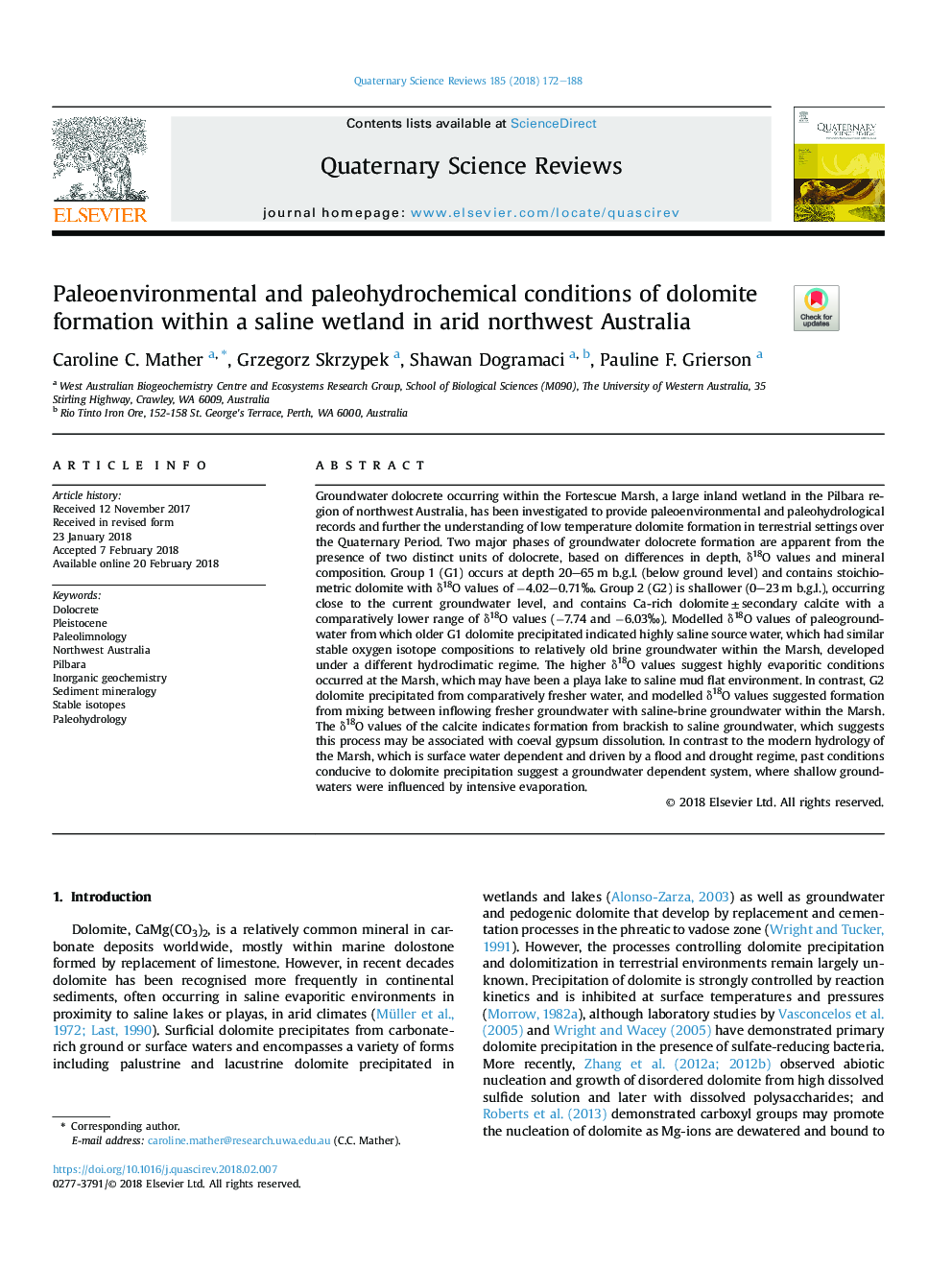| Article ID | Journal | Published Year | Pages | File Type |
|---|---|---|---|---|
| 8914925 | Quaternary Science Reviews | 2018 | 17 Pages |
Abstract
Groundwater dolocrete occurring within the Fortescue Marsh, a large inland wetland in the Pilbara region of northwest Australia, has been investigated to provide paleoenvironmental and paleohydrological records and further the understanding of low temperature dolomite formation in terrestrial settings over the Quaternary Period. Two major phases of groundwater dolocrete formation are apparent from the presence of two distinct units of dolocrete, based on differences in depth, δ18O values and mineral composition. Group 1 (G1) occurs at depth 20-65â¯m b.g.l. (below ground level) and contains stoichiometric dolomite with δ18O values of â4.02-0.71â°. Group 2 (G2) is shallower (0-23â¯m b.g.l.), occurring close to the current groundwater level, and contains Ca-rich dolomiteâ¯Â±â¯secondary calcite with a comparatively lower range of δ18O values (â7.74 and â6.03â°). Modelled δ18O values of paleogroundwater from which older G1 dolomite precipitated indicated highly saline source water, which had similar stable oxygen isotope compositions to relatively old brine groundwater within the Marsh, developed under a different hydroclimatic regime. The higher δ18O values suggest highly evaporitic conditions occurred at the Marsh, which may have been a playa lake to saline mud flat environment. In contrast, G2 dolomite precipitated from comparatively fresher water, and modelled δ18O values suggested formation from mixing between inflowing fresher groundwater with saline-brine groundwater within the Marsh. The δ18O values of the calcite indicates formation from brackish to saline groundwater, which suggests this process may be associated with coeval gypsum dissolution. In contrast to the modern hydrology of the Marsh, which is surface water dependent and driven by a flood and drought regime, past conditions conducive to dolomite precipitation suggest a groundwater dependent system, where shallow groundwaters were influenced by intensive evaporation.
Keywords
Related Topics
Physical Sciences and Engineering
Earth and Planetary Sciences
Geology
Authors
Caroline C. Mather, Grzegorz Skrzypek, Shawan Dogramaci, Pauline F. Grierson,
